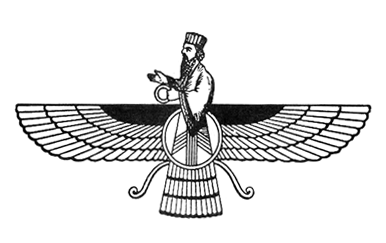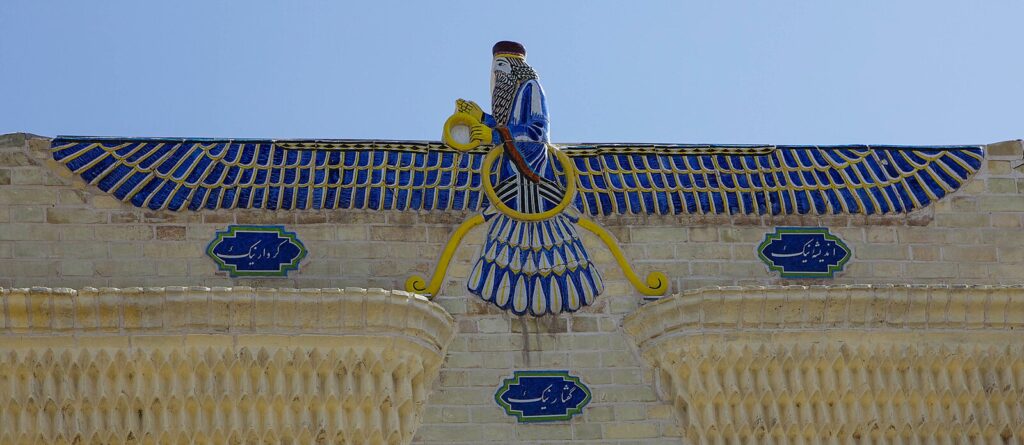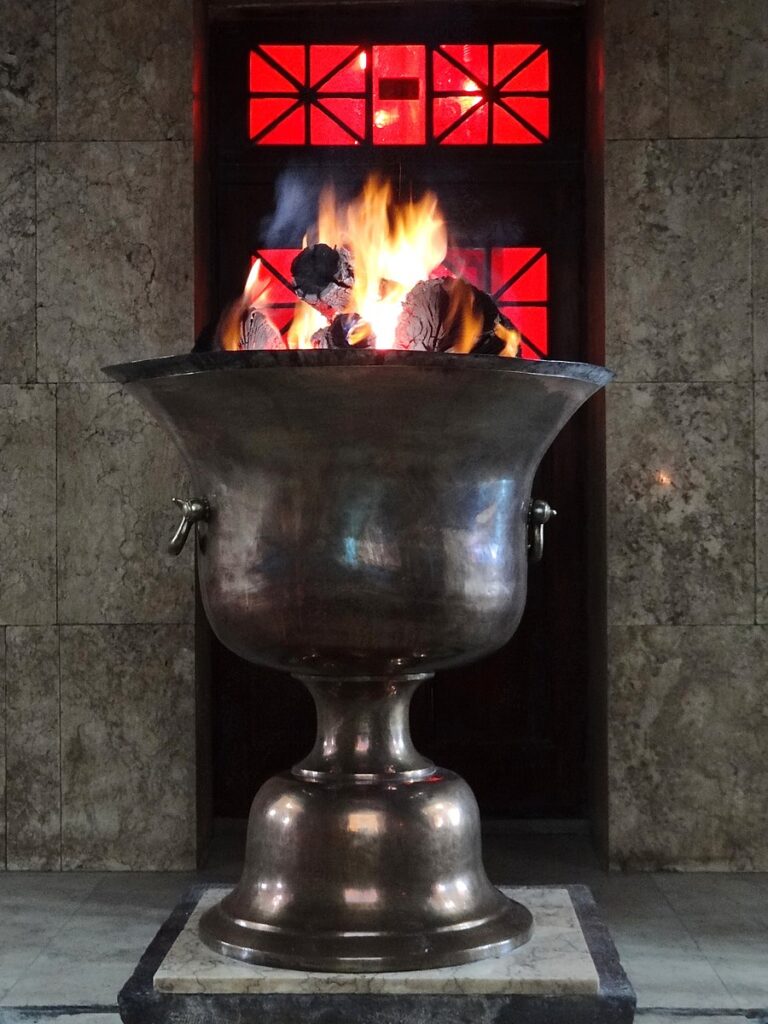Are you familiar with Zoroastrianism?
Not many may have heard of it before, but it is one of the oldest organized faiths in the world. It is a monotheistic faith—a belief in one person or god—and its principles lie in the dualistic cosmology of good and evil.
Zoroastrianism is practiced worldwide. It has roots in Iran and a fairly large following in India.
Here are ten things you need to know about Zoroastrianism:

1. Zoroastrianism Was Founded Thousands of Years Ago
Historians believe the religion was founded 4,000 years ago in Ancient Persia. It is believed to have been organized in the 2nd millennium Before Common Era (BCE). However, written records about the faith only date back to the 6th century BCE.
The religion cites Airyanem Vaejah as the birthplace of Zoroastrianism. It is Zoroaster’s home and the place where he reportedly received his enlightenment.
In Indo-Iranian mythology, it is the home of Indians and Iranians between 5000 and 2000 BCE. The two nations used to live as one and shared the same language and culture.
However, the nations separated in the 3rd millennium BCE. This is why India and Iran have different languages, cultures, and physical characteristics.
However, there are many similarities when you look closely at the Avesta, which are Zoroastrianism’s sacred texts. And also, Rig Veda, India’s holy texts.
2. Zarathustra
Zoroaster was born Zarathustra. This was his original name in the Avestan or native Indo-Iranian language. Zoroaster is a Greek translation.
It is tricky to pinpoint the exact year of Zoroaster’s birth, but historians have it pegged between 1500 and 1000 BCE. While his exact birthplace and birthdate are unknown, Zoroaster lived in an Iranian plateau.
As the founder of the first documented monotheistic faith, Zoroaster reportedly left a huge impression on two of the most famous philosophers in the world: Pythagoras and Plato. Zoroastrianism is also believed to have influenced religions centered on the God of Abraham: Christianity, Islam, and Judaism.
Since historical documentation from the time is incredibly limited, little is known about Zoroaster’s life until he became a prophet. His teachings began to spread throughout the country. By the 6th century BCE, Zoroastrianism became the official religion in Iran.
He created Gathas, also known as the hymns of Zarathustra. They glorified Ahura Mazda, the god of Zoroastrianism. Gathas made his followers believe that Zoroaster was a priest who preached about the ancient Iranian religion, which was polytheistic in nature.
The hymns were Zoraster’s way of demonstrating that he had been enlightened with the knowledge that Ahura Mazda was the one true god, not the others that the ancient Iranian religion centered around.
3. 200,000 People in the World Are Zoroastrians
Once the most dominant religion in Iran, there are now only around 200,000 Zoroastrians in the world. Many of them are in Iran and India, the original practitioners of the faith.
There is also a significant Zoroastrian population in North America. In 2022, Zoroastrians converged at the four-day World Zoroastrian Congress in New York City to discuss the religion’s growth and the challenges it faces.
One of the major challenges of the religion is the refusal to convert new members. Zoroaster never preached about the faith in his hymns but merely venerated Ahura Mazda.
The religion also doesn’t recognize children of mixed marriages as Zoroastrians.
The older generation believes that bringing in younger Zoroastrians has the power to keep the religion alive for many years to come.
4. The Bearded Man
The Faravahar is the best-known symbol for Zoroastrianism. It depicts a bearded man reaching forward with one hand while standing on a pair of outstretched wings. A circle in the middle represents eternity.
No written interpretation of the symbol has been found, but based on the teachings of Zoroastrianism, the bearded man is a representation of Ahura Mazda. Some also relate the symbol to a guardian angel, the divine grace, the king, and the tenets of Zoroastrianism.

5. Good Vs. Evil
In everyday life, people are constantly confronted with the choice between good and evil. It is not a unique concept—for example, Christians have the angel and devil—and Zoroastrianism has a similar personification for this constant battle.
In this faith, Ahura Mazda alone is good, while the bad is represented by the evil spirit Ahriman. The concept of good and evil is what historians believed ultimately influenced the newer religions.
6. 7 Zoroastrian Holy Immortals
As a monotheistic religion, Zoroastrianism only has one god: Ahura Mazda. It also believes in the seven holy immortals. This is similar to how Catholics pray to the saints for intercession.
Who are these holy immortals, and what do they do? They are Ahura Mazda’s leaders in governing the world and are assisted by deities known as yazatas.
Spenta Mainyu
Known as the Zoroastrian Holy Spirit, the Spenta Mainyu is said to represent light and goodness. Zoroastrian mythology pegged Spenta Mainyu as the protector of all living things.
Asha
Asha means “truth and correctness,” but in Zoroastrianism, it holds a heavier meaning. It subscribes to the notion that every action merits a reaction. Asha upholds justice, truth, and righteousness.
Vohu Manah
Vohu Manah represents good deeds. Zoroastrianism teaches that good deeds are possible only with good thoughts and good words. Thoughts play an important role in shaping a person.
Kshathra Vairya/Shathra
Representing power, Kshathra Vairya/Shathra is depicted with a sword in one hand and a circle in another, as he is meant to guard metals. He shapes good leaders and rulers. In mythology, his enemy is Savol, the personification of bad government, laziness, and chaos.
Armaiti
Armaiti is the goddess of the earth and fertility that focuses on piety and devotion. In some works, she is portrayed as the wife of Ahura Mazda, but there are inconsistencies in the records.
Haurvatat
Haurvatat is the manifestation of health and salvation through wholeness and integrity. As the bearer of water in the universe, Haurvatat also brings freshness to plants.
Ameratat
Ameratat represents immortality, grows plants, and raises sheep.
7. Fire Altar
Fire is an important element in Zoroastrianism. Zoroastrians also worship in a temple where the altar is supposed to have eternal fire. Furthermore, fire and water are symbols of purity.
According to the Parsi Directory, there are currently 167 fire temples worldwide, many of which are in India. Some 45 fire temples are said to be in Mumbai, another 105 are spread throughout India, and 17 are located in different countries.
Nine fire temples are considered the main Zoroastrian temples: eight are in India, and one is in Iran.
The highest-grade fire is said to be in the Fire Temple of Yazd in Yazd, Iran. It houses the Atash Bahram, or Victorious Fire of Zoroastrianism.
The fire in the temple has burned continuously since the year 470 and is the longest-burning flame in Iran. Outside the temple lies a pool to complete Zoroastrian’s veneration of fire and water.

8. Nowruz Holiday
Nowruz, which means “new day,” is a popular Iranian holiday. It marks the first day of spring, either March 20 or 21. Many religions and cultures also celebrate it, but for Iranians, it is their New Year.
The holiday is rooted in Zoroastrianism, which is why a major part of the celebration involves ritual dances centered on fire and water. Many also believe that Zoroaster was the one who established Nowruz as a holiday to be celebrated.
9. Famous Zoroastrians
It is no longer very common for people to hear that someone is Zoroastrian today. Two of the most well-known Zoroastrians have passed, but they have left an imprint on many people’s lives.
Jamsetji Tata
One of the most famous and wealthy Zoroastrians was Jamsetji Tata. He was the founder of the Tata Group, India’s largest conglomerate.
He wasn’t born wealthy, and his family was driven out of their hometown during the Muslim conquest of Persia. They settled in India, where Tata’s father established an export-trading firm.
Tata had a Western education and performed well in school. He eventually joined his family’s business and made a name for himself at 29 when he created a successful trading firm.
One of the most important things in Zoroastrianism is that you are supposed to help others in your religion, especially when you gain wealth. Tata did just that.
Freddie Mercury
He wasn’t always Freddie Mercury—the British singer was born Farrokh Bulsara in Zanzibar to Parsi-Indian parents. His parents were Zoroastrians, but it was unclear if Mercury himself practiced the faith.
Freddie Mercury grew up in India with relatives and studied at a Catholic boarding school. He rarely talked about his faith at the peak of his popularity, but it wasn’t a secret that his parents were Zoroastrians.
10. Snoop Dogg Offends Zoroastrians
Rapper Snoop Dogg once caught the ire of Zoroastrians for the music video for King, a song by Amitis that he features in. Amitis is an Iranian-born singer, and in her video, she showcased her roots through the appearance of the Faravahar.
In the video, Dogg is seen smoking weed and sitting on a throne beneath the Faravahar. There were also strippers dancing in front of the rapper.
Conclusion
Not many may be familiar with Zoroastrianism, as its followers are not nearly as expansive as the world’s most prominent religions. However, many of today’s religions were shaped by this monotheistic faith.
It was the first documented organized religion founded over 4,000 years ago. It is rich in history and culture and worth learning about.

